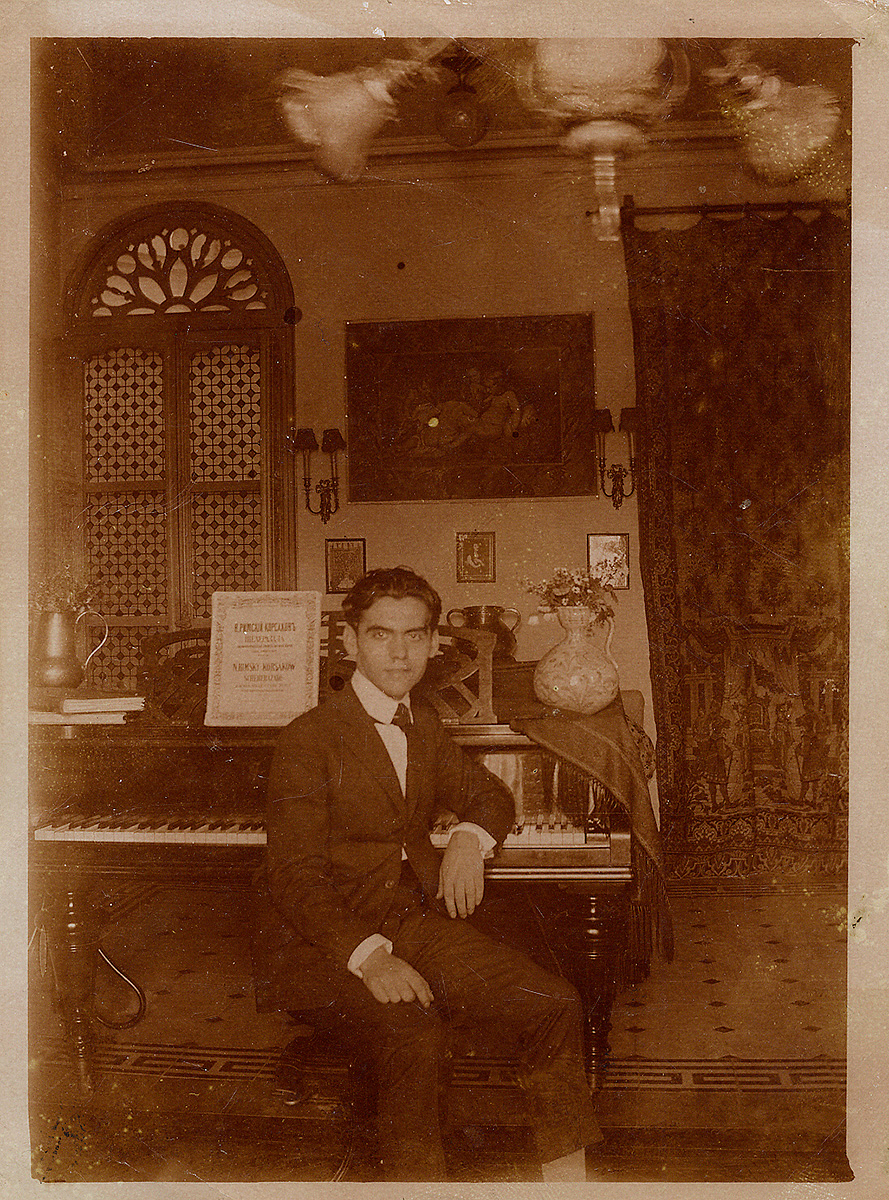The learning and study of music had been closely linked to the biography of Federico García Lorca since he was a child. His father’s family was full of good amateurs and occasional performers who provided an intense soundtrack to young Lorca’s childhood. Baldomero García Rodríguez, his father’s brother, was unwittingly one of his first teachers. Baldomero combined his musical talent with a bohemian and disorderly disposition that brought him a bad reputation among his peers. He was lame due to a congenital defect and famous for his spectacular drunkenness, his obsessive love affairs and the malicious songs he used to sing. In contrast, he was a great guitar and bandurria player. Francisco García Lorca defines him as “a kind of rather cursed country minstrel” to whom the family referred to as a counter-example: “We already have another Baldomero (Idiot)!”, they used to say when Federico used words they considered inappropriate, to which he would reply, “It would be an honor for me to be like him!”. Isabel García Rodríguez, the father’s younger sister, was also an excellent amateur who used to perform languid habaneras. As was her first cousin Aurelia González García,who performed The Dreams of my Cousin Aurelia.

The folklore of the Vega was the music that rocked the fantasy of the young Lorca and nurtured a rich popular repertoire that led him to harmonize and record the Spanish songs with La Argentinita, in 1931, and to turn him into a notable concert performer.
Isabel García Lorca recalls in her memoirs many of the popular songs of the Vega that later found their way into her brother’s work: “In Federico [the couplets] appear as songs fused in his feelings, which he relives in a present that is no longer that of his childhood, reviving a memory that he now sees as different and past”.
When the family moved to Granada, Federico completed his education. He had three teachers who revealed to him the secrets of solfège: Eduardo Orense, organist of the Cathedral and at the same time pianist of the Casino; Juan Benítez, also cathedral organist and, above all, Antonio Segura Mesa, pianist, composer and free solfège and harmony teacher at the Municipal School of Music who, at the age of 20, was the accompanist of the singer Giorgio Ronconi at the Isabel II School of Singing and Declamation. Federico dedicated his first book, Impressions and Landscapes, to Segura: “To the revered memory of my old music teacher, who passed his gnarled hands, which had plucked so many notes on pianos and written rhythms on the air, through his twilight silver hair”.